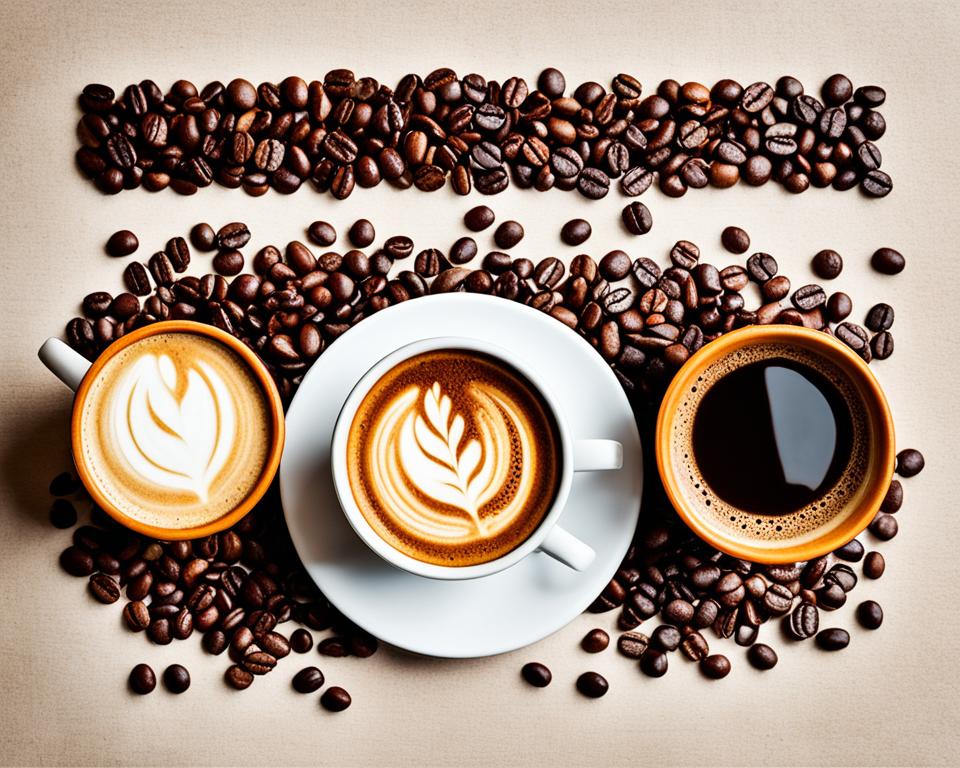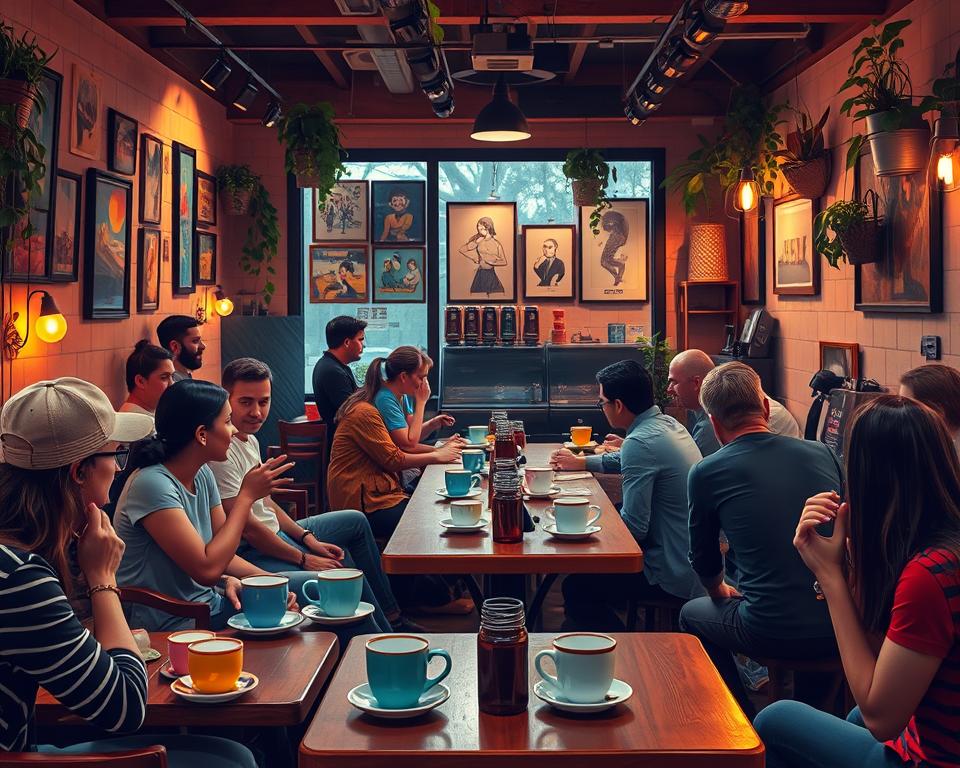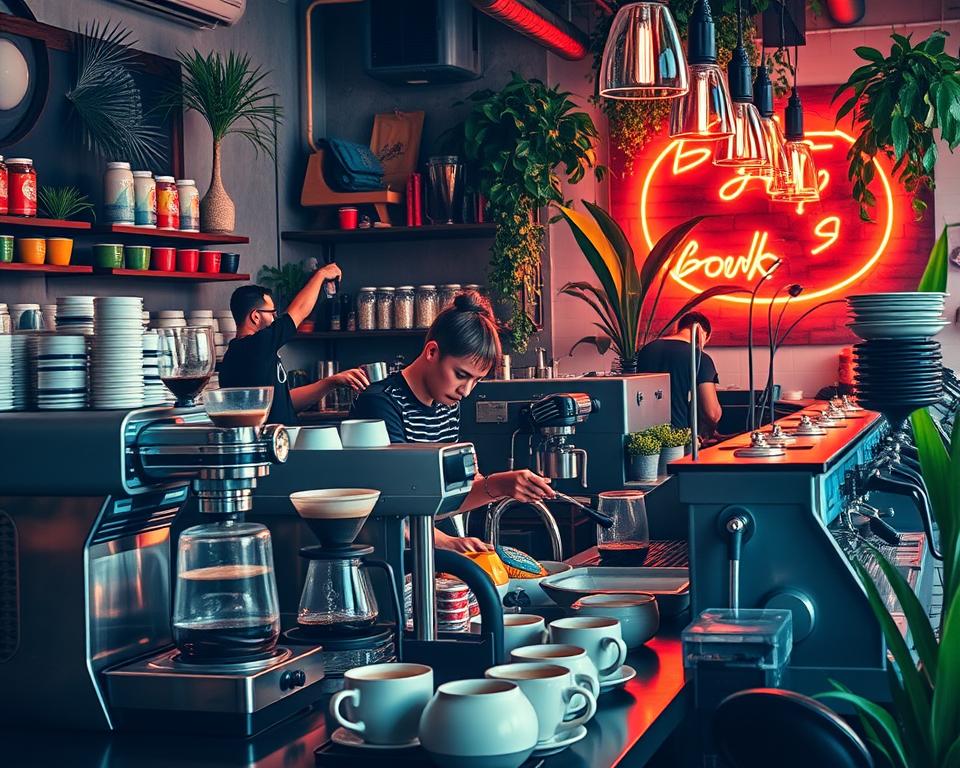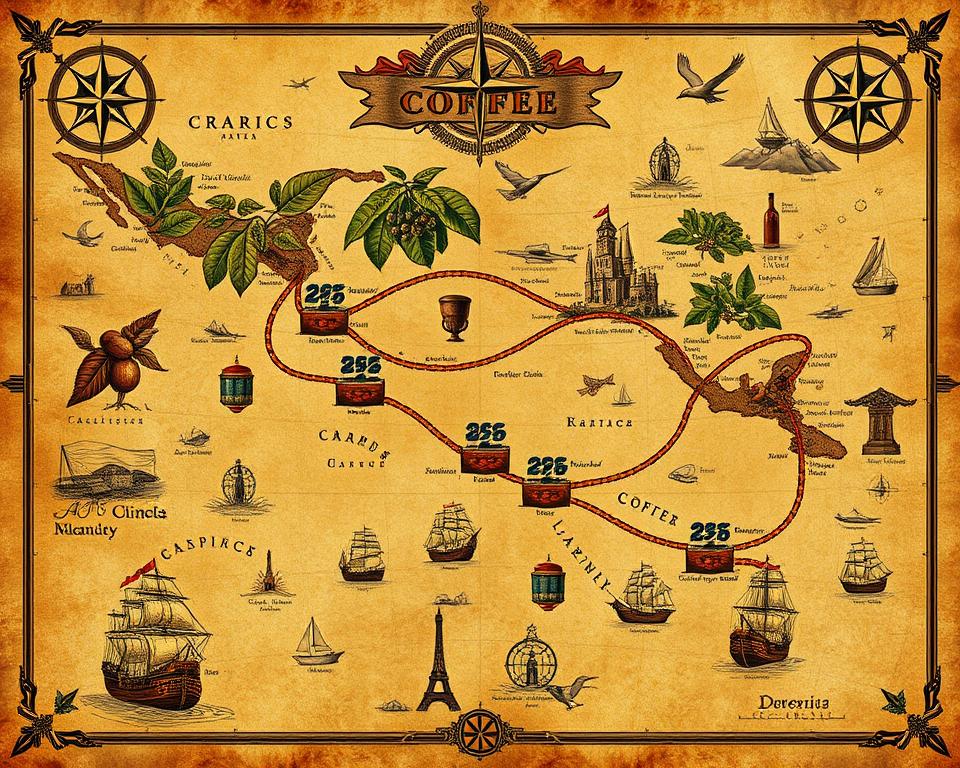It is easy to forget in a market where specialty coffee and cutting-edge brewing equipment rule. In the 19th century, Folgers and Maxwell House began a major change. They launched in 1850 and 1892, starting the First Wave by making coffee an everyday item. By the late 20th century, Starbucks had expanded fast under Howard Schultz. This led to the Third Wave, highlighting refined flavours and artisanal roasting, making coffee a special craft.
The variety in coffee brewing today, like pour-over and areopress, shows our deep connection to coffee. It’s not just about rich flavours or cool cafes.
Our interest in the ethics and origins of coffee shows how connected we are to this drink. Let’s explore the changes in the coffee industry and how we enjoy our coffee each day.
We’ll look at how coffee has changed from the fields to our cups through different cultural and industry changes. Understanding each wave’s unique points, from easy single-cup, helps us see the social reasons behind our coffee choices.
Key Takeaways
- The transformative history from the First Wave mass production to the Third Wave craft of coffee.
- Starbucks’ significant role in evolving the coffee industry since its expansion in the 1980s.
- The declined popularity of instant coffees as single-cup brewing technologies took hold.
- The importance of detailed tasting notes, single-origin varieties, and ethical sourcing.
- A glimpse into the future of coffee culture, hinting at innovations in brewing and customer experience enhancements.
- An understanding of how factors like consumer preferences and societal trends have steered the changes in coffee waves.
The Evolution of Coffee Culture: From Convenience to Craftsmanship
Tracing coffee’s history, we see it has transformed through time. The phases known as first wave coffee, second wave coffee, and the vibrant third wave coffee movement stand out.
These waves show how our coffee preferences mirror societal trends in coffee consumption.
Historical Context of Coffee’s Evolution
The journey began in the 19th century. This movement focused on making coffee widely available. Brands like Folgers and Maxwell House became staples in American homes.
They ushered in an era where coffee meant convenience.
How Coffee Waves Reflect Societal Changes
Then came the second wave, bringing European espresso and coffee houses to the fore. When Howard Schultz bought Starbucks in 1987, coffee became more than a warm drink. It became a lifestyle and status symbol. This era showed a decline in instant coffee as people craved quality.
The third wave coffee movement brings attention to how coffee is made and where it’s from. It celebrates fair trade and sustainability. This wave is about enjoying coffee for its flavours and stories. It shows how the coffee culture keeps growing.
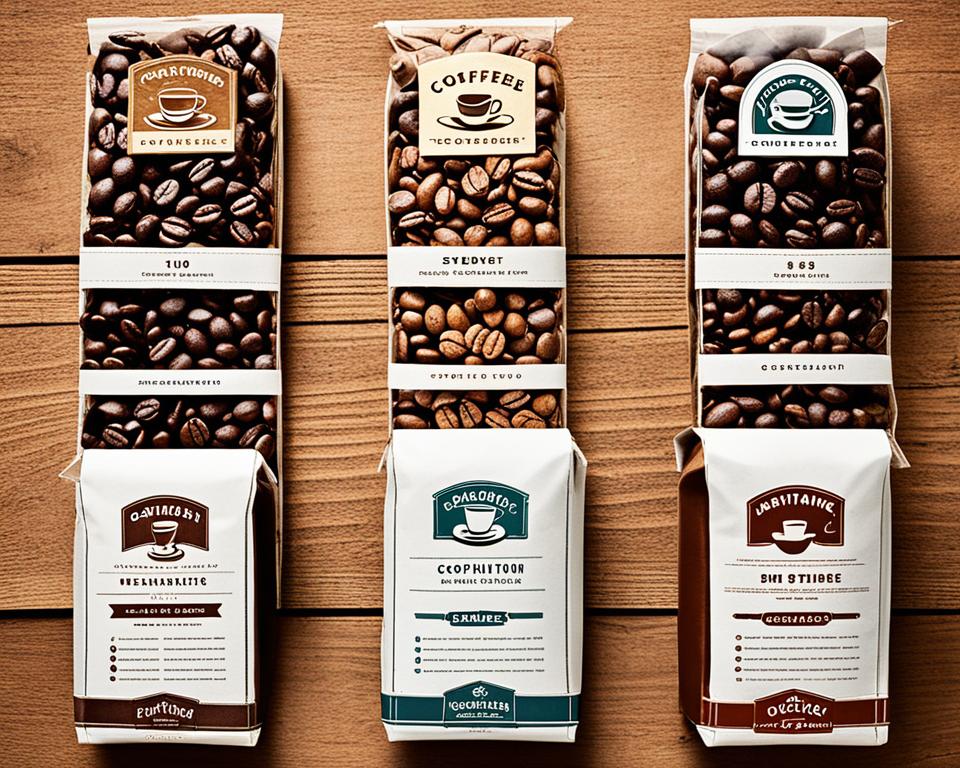
Talk of a fourth wave is beginning. This wave might compare to the craft of brewing spirits and beer. It suggests a future where focus shifts to how coffee beans are treated and brewed. This could open a new chapter in coffee culture.
| Wave | Highlights | Impact on Coffee Culture |
|---|---|---|
| First Wave | Folgers and Maxwell House | birth of convenient, home coffee |
| Second Wave | European espresso, Starbucks | Coffee as a reflection of consumer identity |
| Third Wave | Single-origin, artisanal methods | Emphasis on quality and sustainable practices |
Exploring the world of coffee shows it’s more than a drink. It’s a phenomenon that grows with our society. From simple beginnings to today’s craftsmanship, coffee continues to evolve.
The Rise of Mass Coffee Production
The early 1800s witnessed the start of first-wave coffee, changing coffee history forever. Coffee grew into a major global commodity, leading to mass coffee production.
Well-known brands like Folgers and Maxwell House were pioneers, making innovations such as vacuum-sealed packaging around 1900. This change helped coffee become a widespread consumer product.
The focus of this wave was on making coffee easy to get and use. Quality was often sacrificed for the convenience of having coffee available in stores.
The charm of this wave was its integration into the daily lives of many, blending the evolution of the coffee industry with the American lifestyle. However, its priority of being cheap and plentiful led to criticism for making the coffee experience too simple.
The era wasn’t just about vacuum sealing or consistent roasts; it’s also when the automatic home coffee drip maker was created in the mid-1980s. Coffee was mostly seen as a basic need—commodity coffee—rather than a luxury to enjoy.
As coffee history progressed, a shift to the second wave showed a movement towards improving quality and taste.
| Period | Innovation | Brand | Impact on Coffee Culture |
|---|---|---|---|
| Early 19th Century | Introducing mass-produced coffee | Folgers, Maxwell House | Standardizing coffee as part of the American household |
| Mid-17th Century | Expansion of coffee plantations | — | Meeting the massive demand in America |
| Mid-18th Century | Developing vacuum-sealed containers and instant coffee | Folgers, Maxwell House | Enabling easy home consumption |
| Mid-1980s | Creating the first automatic home coffee drip makers | — | Aligning with the marketing efforts to make coffee a daily staple |
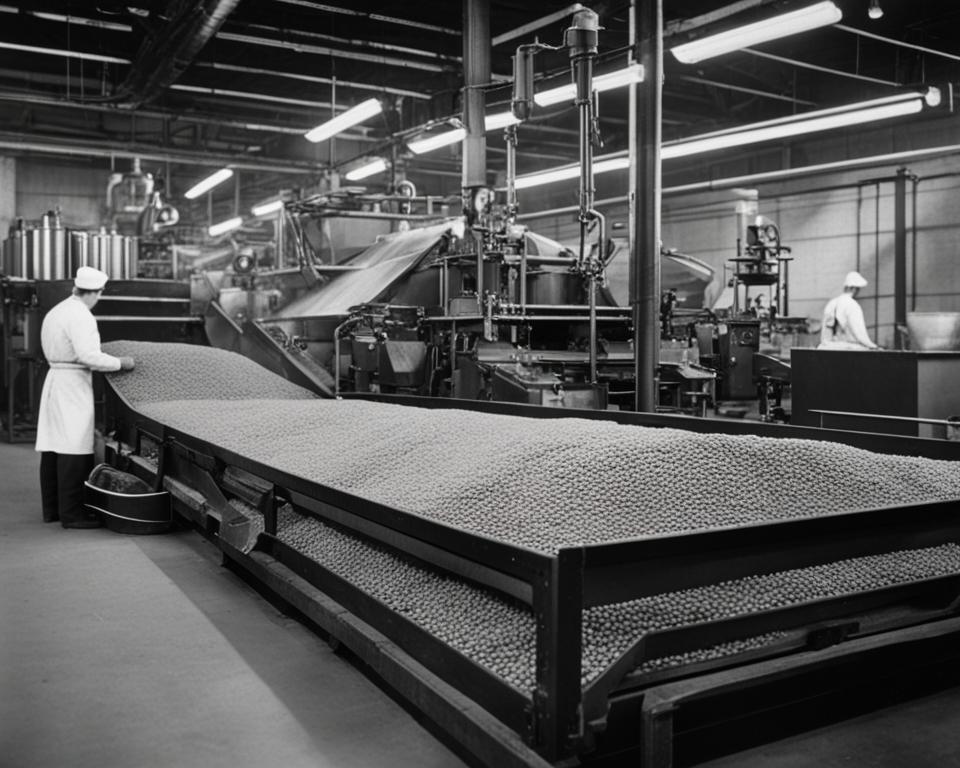
In my journey through the evolution of the coffee industry, I’ve discovered that every sip of coffee has a story of innovation and cultural changes.
Bringing Quality and Variety
I think of crowded Starbucks and the aroma of fresh Caribou Coffee at the mention of coffee. This time changed how we see coffee shops, making them fashionable and not just for a quick caffeine fix. Specialty coffees became a mark of fashion and belonging.
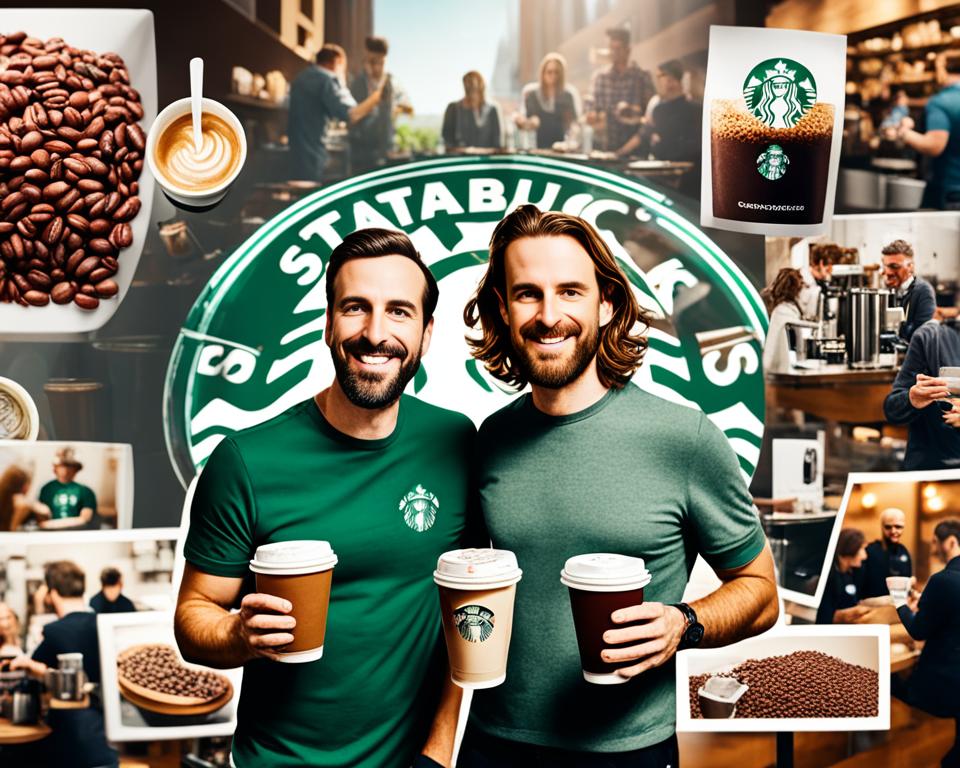
The Popularization of Coffee Chains
Starbucks and others didn’t just offer coffee. They presented an experience that touched hearts globally. With their unique vibe and wide coffee selection, these chains have become essential spots for many.
Caribou Coffee and others made the idea of a coffee shop as a third space very popular.
Shifts in Consumer Preferences for Roasting Styles
The way coffee was roasted changed a lot then, too. There was a move towards diverse flavours and strengths to match what people liked. Dark, flavorful roasts defined this period, setting new standards for what coffee could be.
| Year | Event | Impact on Coffee Culture |
|---|---|---|
| 1960s-1970s | Beginning of Second Wave Coffee | Introduction of darker roasts and specialty drinks. |
| 1982 | Starbucks founded | Reimagined coffee as a premium experience. |
| 1992 | Caribou Coffee emerges | Expansion of coffee chains advocating quality and variety. |
| 2007 | UrbanHouse established | Demonstrates a commitment to ‘seed-to-cup’ quality and locally sourced coffee. |
| 2015 | Buckman Coffee Factory opens | Supports the microroasting movement in Portland. |
As a journalist who loves coffee, I’ve watched how the second wave has changed how we start our day and meet up with people.
From Starbucks’ espressos to UrbanHouse’s artisanal brews in Tennessee, it’s clear we love our diverse coffee. And even as our tastes in coffee and roasting styles change, one thing stays the same: coffee is at the heart of our daily routine.
How Does Liberica Coffee Fit into the Different Waves of Coffee Culture?
The rise of specialty coffee has sparked curiosity around diverse beans. As coffee enthusiasts seek new experiences, many are eager to uncover the unique flavor of liberica. This rare variety offers a bold, fruity profile, fitting seamlessly into the third wave movement that embraces craftsmanship and distinct taste.
A Focus on Origin and Artisanship
This coffee goes beyond a simple trend. It highlights the deep stories behind specialty coffee. Baristas become artisans, experts in choosing beans, roasting, and brewing. This movement is all about bringing innovative and high-quality coffee, where each cup tells the bean’s journey from far-off farms to your morning brew.
People now want to know where their food comes from, and that includes coffee. This curiosity supports the third wave, which leans towards lighter roasts and single-origin beans. At artisanal coffee shops, you learn about different beans and how they taste.
Supporting fair trade and small-batch roasting helps farmers and their communities, making our coffee choices matter.
I look forward to seeing how bean treatment and growth conditions create new coffee experiences. The future hints at more inventive brewing methods, and I’m excited to try them.
From creamy nitro coffees to expertly made cold brews, I’m eager for what’s next. This ongoing wave blends sustainability, quality, and craftsmanship.
FAQ
What defines each “wave” in the evolution of coffee culture?
Each “wave” in coffee culture shows a shift in what people value about coffee. The first wave focused on making a lot of coffee easily available, thanks to brands like Folgers and Maxwell House. This wave made coffee quality and the experience of drinking it in cafes more important, with pioneers like Starbucks.
The third wave pushes quality even further. It’s all about craft coffee—how it’s roasted, where it’s from, and how it’s brewed.
How did coffee impact mass coffee production?
The first wave made coffee accessible to everyone, focusing on easy access and convenience. Brands like Arbuckle’s revolutionised how coffee was produced and shared, making good coffee affordable and quick to find across the country.
What societal changes are reflected in the coffee movement?
The second wave, with Starbucks at the forefront, showed people wanted more quality in their coffee. This era saw coffee shops become popular places to relax and enjoy better coffee. This shift meant consumers started caring more about the taste, variety, and where they had their coffee.
How did the second wave change consumer preferences for roasting styles?
During the second wave, consumers saw a wider range of roasting styles, moving away from the uniform, often burned taste of before. Coffee shops have started introducing lighter roasts. People began to notice and appreciate the different tastes of their coffee.
What are the hallmarks of coffee?
Third-wave coffee stands out for its focus on quality and unique flavors. It loves light roasts, single-origin beans, and making coffee in an artisanal way. It also cares a lot about where the beans come from, aiming for ethical practices. Plus, it values the skill of making coffee a lot.
Why is the coffee shop ambiance important in second-wave coffee?
For second-wave coffee, how a coffee shop feels has become really important. Coffee shops turned into cosy spots where people could hang out and enjoy their drinks together. This welcoming setting helped grow the coffee culture that Starbucks and others were building.
How has coffee bean sourcing changed across the different coffee waves?
Bean sourcing has evolved from not knowing much about the beans to ensuring they come from ethical, clear sources. Initially, details on bean origins were scarce. Now, there’s a big focus on direct trade. This ensures the beans are of high quality and sourced responsibly.
What is the importance of coffee brewing methods in the third wave movement?
In this wave, how you brew coffee is crucial because it brings out each coffee’s unique flavors. Techniques like the pour-over, French press, and AeroPress let people explore different tastes. These methods make the coffee-drinking experience special for those who love their brew.

